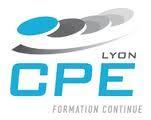Date On Request
Formation : Techniques Electrophorétiques - Application à l’électrophorèse des protéines et des acides nucléiques
France, Lyon
CONTENU PÉDAGOGIQUE
RAPPEL DES PROPRIETES DES PROTEINES ET DES ACIDES NUCLEIQUES EN RELATION AVEC LES TECHNIQUES ANALY TIQUES
- Structure
- Propriétés physico-chimiques (ionisation, solubilité, dénaturation…)
TECHNIQUES ELECTROPHORETIQUES
- Objectifs (étude d’un mélange, vérification de la pureté d’un échantillon, analyse de la structure, détermination de la masse moléculaire, produits de PCR)
- Principes
- Matériels et supports : gel de polyacrylamide, gel d’agarose
- Domaines d’application
OBTENTION DE L’ECHANTILLON
- Extraction des fractions protéiques
- Purification d’échantillons protéiques
- Electrophorèse en condition native ou dénaturante (PAGE, SDS PAGE)
- Préparation de l’échantillon
- Dépôt – Migration – Révélation – Exploitation
- Produits PCR et fragments de restriction
INTRODUCTION AUX TECHNIQUES DE TRANSFERT DES PROTEINES
- Intérêt de la technique
- Transfert (Western Blot)
- Révélation
- Analyse
